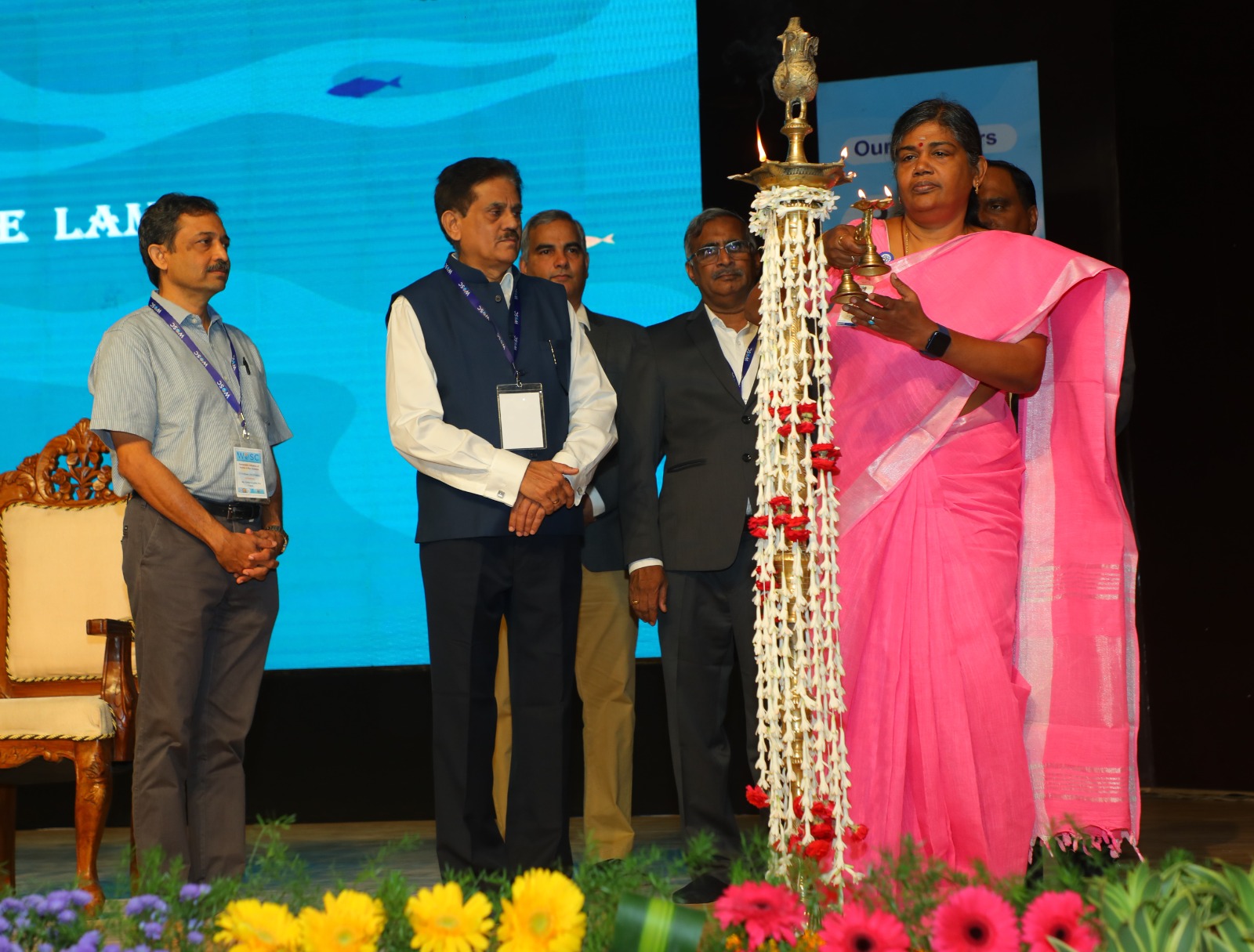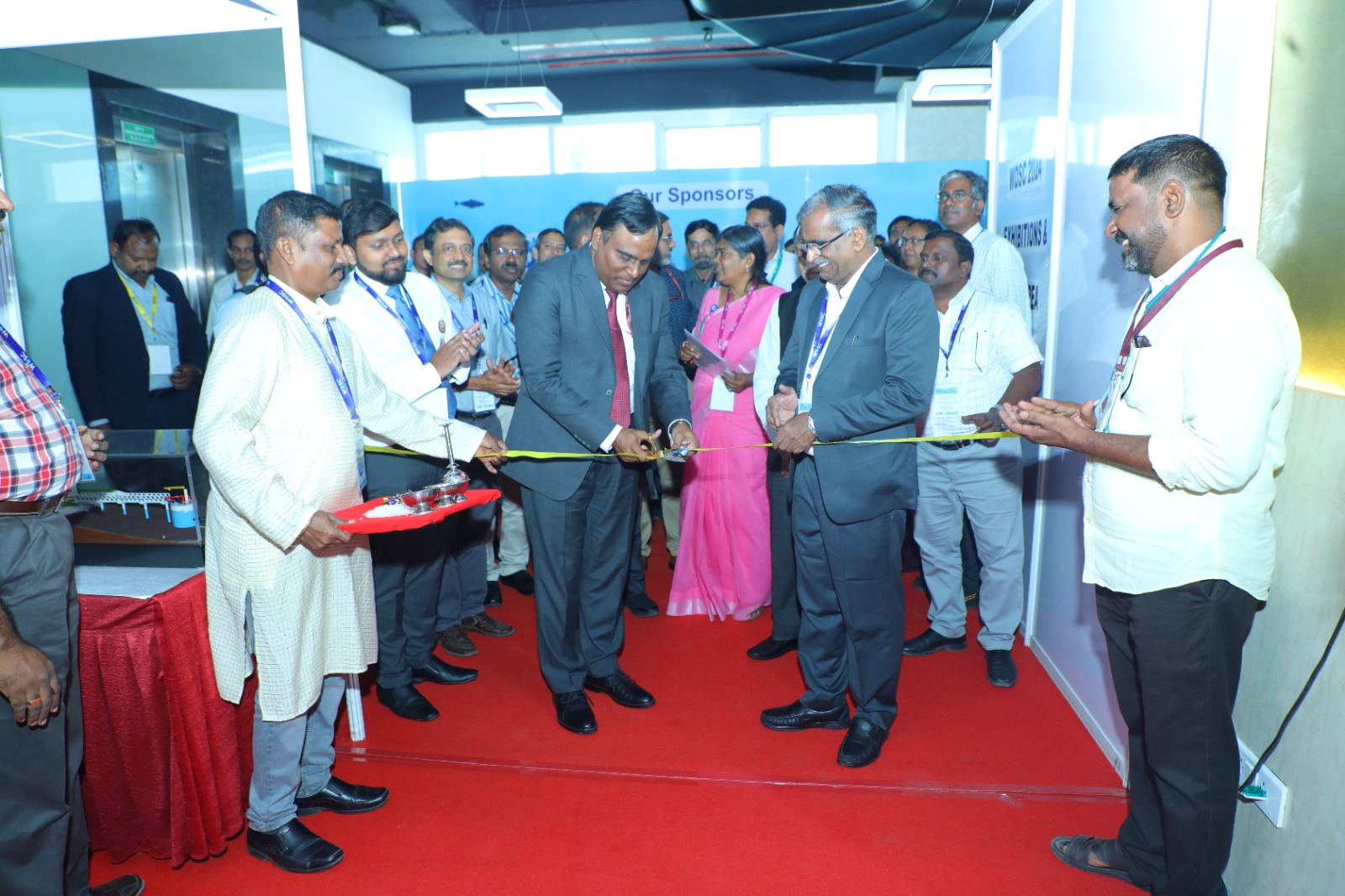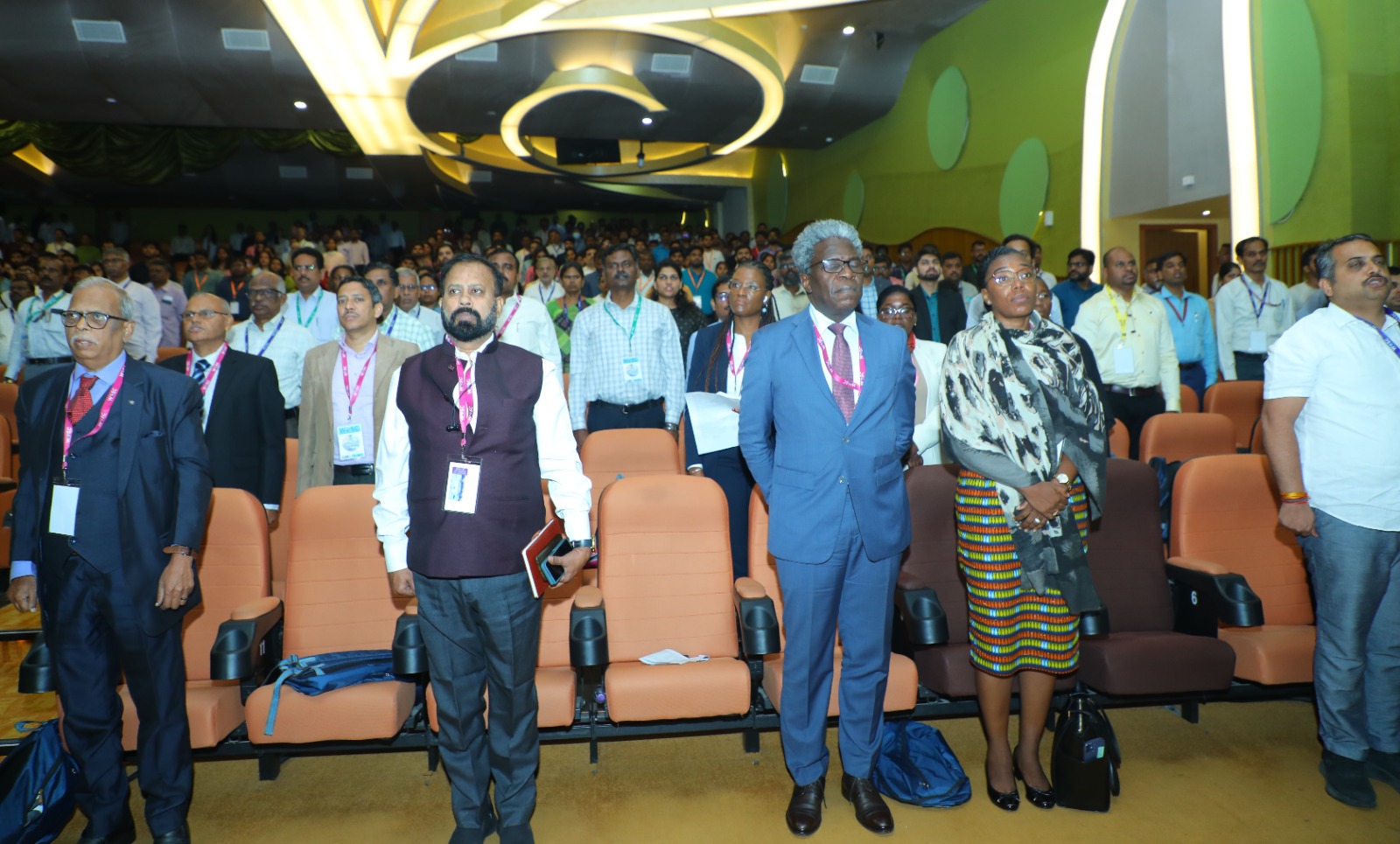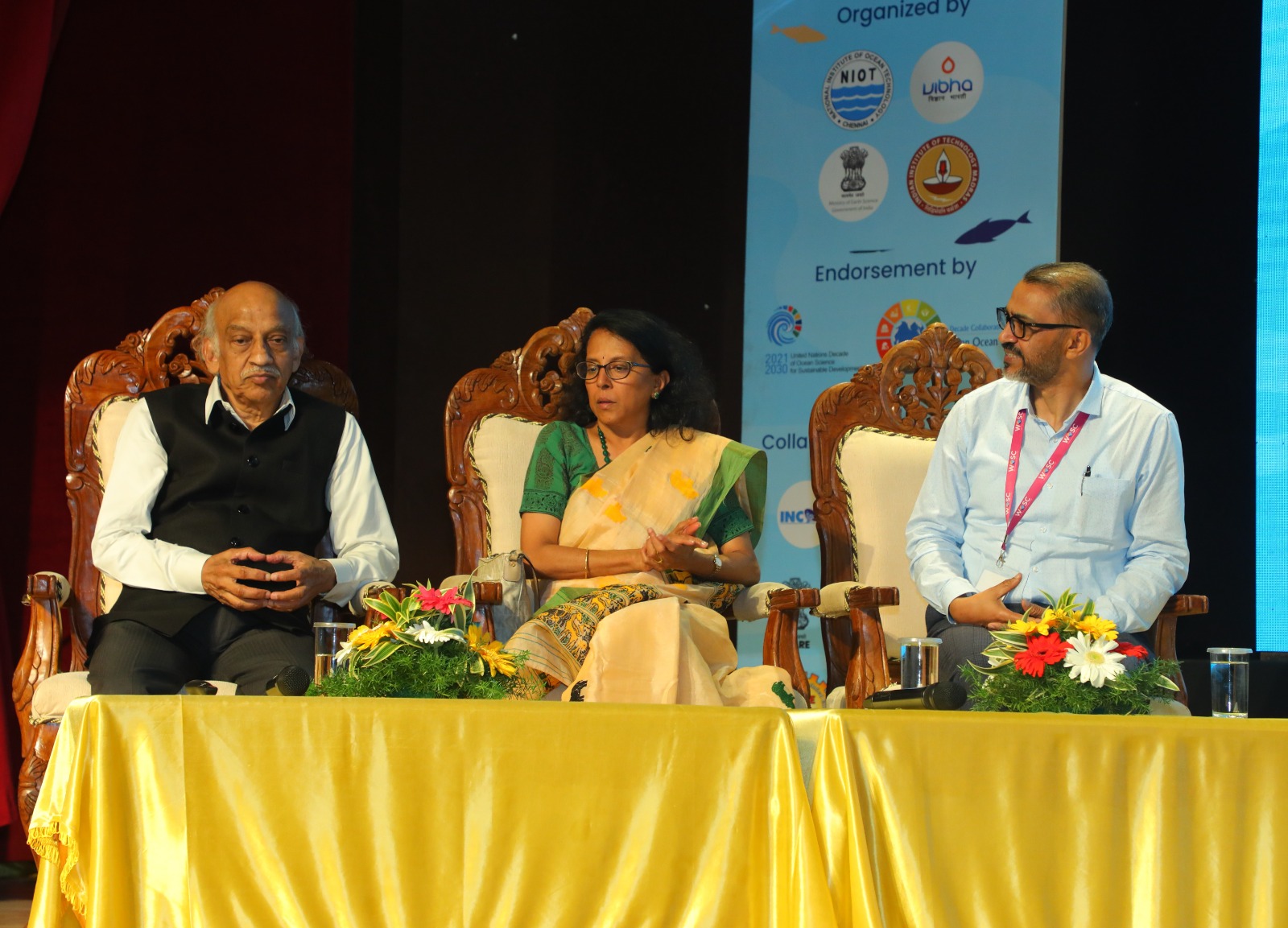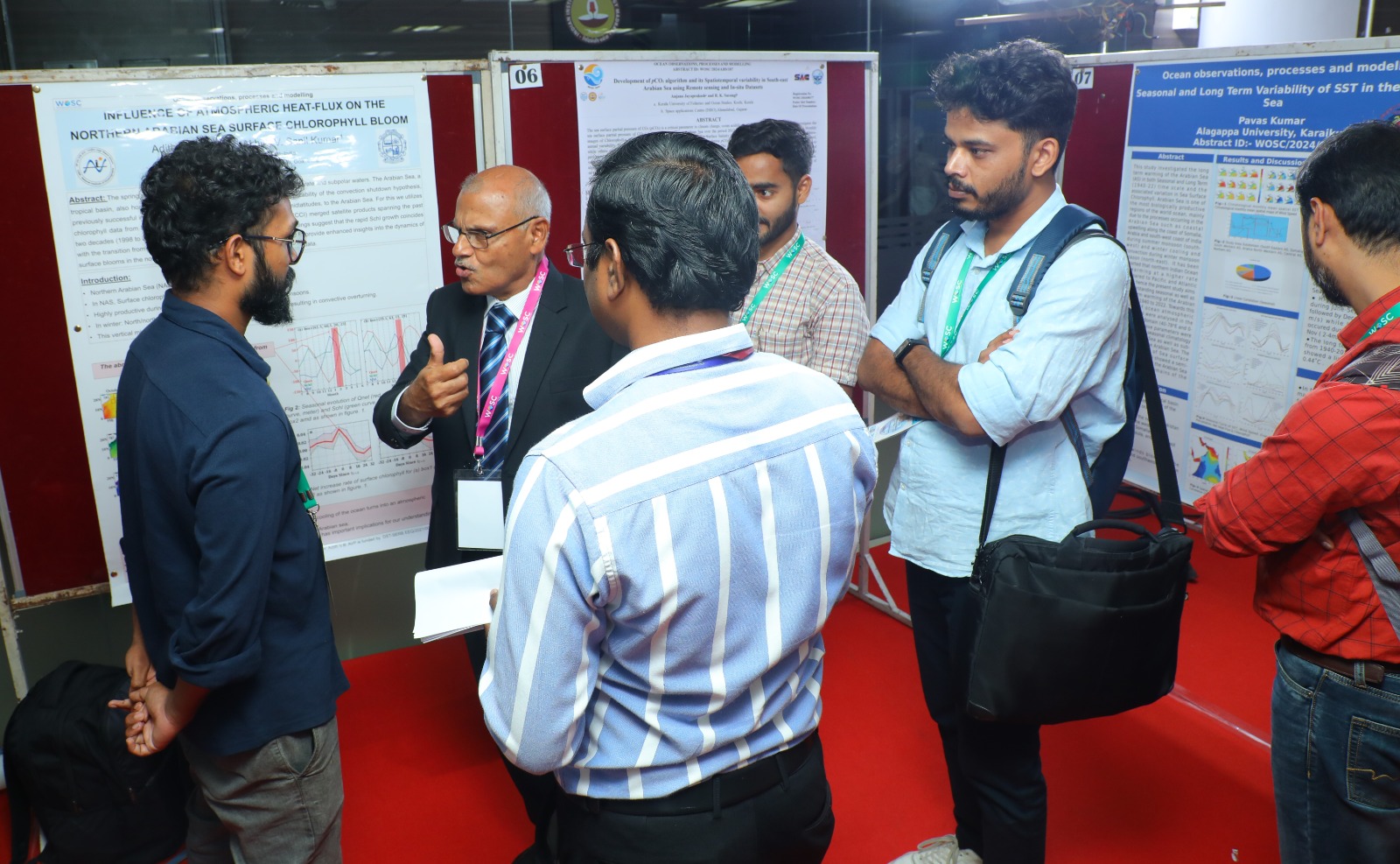Chennai. World Ocean Science Congress (WOSC 2024) provides a common platform for the stakeholders of ocean, mainly in the sectors of tourism, navy and defence, maritime industries, transportation, ports & harbour, coastal infrastructure, researchers, academicians, legal and geo-political experts, archaeologists, etc., to interact, exchange ideas and appreciate the conflicting demands of the stakeholders.
The third WOSC conference is conducted at IITM Research Park, Chennai from 27 – 29th February 2024 with the theme ‘Sustainable Utilization of Oceans in Blue Economy’ which focuses on the development of coastal infrastructure, tourism in coastal states & islands, offshore & coastal fisheries, marine biotechnology, warming of oceans, sea level rise, depletion of oxygen & acidification, marine pollution, oceanic hazards and mitigation, etc.
The following dignitaries attended the Inaugural session –
Dr. G.A Ramadass, Director NIOT; Dr. Ranjith Rath, CMD Oil India Ltd.; Prof. Raghuram Rangasamy, Director In-charge IIT Madras; Dr. Anandavalli, Director CSIR-SERC; Dr. Satheesh Chandra Shenoy, VIBHA and Dr. Vivekananda Pai, VIBHA.
The inaugural event started with lighting of lamp by the dignitaries followed by welcome address by Dr. G. A Ramadass, Director NIOT. During his address, he recalled the establishment of Department of Ocean Development (DoD) in the year 1981 which is currently called as MoES under which 5 autonomous organisations covers all 5 spheres of earth. He stated that Bharat is having 2.2 million square km of Exclusive Economic Zone (EEZ). He also highlighted that the sea area and land area contribute to the blue economy and added that the draft paper for Blue Economy is ready for unveiling. He also indicated the launch of Deep Ocean Mission announced by the Prime Minister of Bharat in September, 2021 which covers 6 verticals with a budget allocation of 4000 Crores within a time frame of 5 Years. One of them is SAMUDRAYAN where 3 aquanauts will be sent to the depth of 6000 meters.
Dr. Satheesh Chandra Shenoy, Vice President – Vijnana Bharati (VIBHA) gave the introductory remarks in which he quoted that Vibha is a Largest Science movement which interlink ancient and modern scientific technologies. VIBHA believes that challenges faced by our country are the unique and it can be solved only through integrated technologies. He also mentioned that there are about 4 million Fishermen who are living near the Coast line and are exposed to natural calamities. Towards this many international conferences, workshops and symposiums are regularly being conducted by VIBHA.
Dr. Anandavalli, Director – CSIR-SERC, during her introductory remarks said that our planet as well as our human body made of 5 basic elements (Sky, Air, Fire, Water and Earth). Three-fourth of the planet covered by Water in the form of oceans and seas which is a multi-disciplinary area. We have to harness the resources without disturbing the ecosystem. Current need is the renewable energy sources which is available in oceans, wind etc., and desalination for our water requirement. She also mentioned that we have to indigenise latest technologies to harvest the resources.
Prof. Raghunath Rangaswamy, Director in-Charge, IIT Madras, formally welcomed the gathering to the IIT campus which covers 645 acres catering to 10000 students in UG, PG and doctoral levels. Recently it aims for international collaboration for faculty and research scholars. Apart from academic it also involved in lot of research activities to resolve the numerous challenges faced by the country.
Dr. Ranjith Rath – CMD – Oil India Ltd. mentioned that the first and second world ocean science congress were the baby steps and now the third is the game changer as it has line of discussions with special directives by distinguished speakers which will enlighten us and create a new wisdom. We have about 7500 km of maritime boundary with coastline. Bharat is blessed with coastal lines harbours and coasts, water ways, plenty of resources atomic and industrial minerals which are crucial for our economy. Sustainable harvesting of these resources is required with the importance of maritime protection. During 1970’s we discovered Bombay High an offshore oilfield which recently celebrates 50th year producing crude oil for economy. Recently we have unlocked 1 million Sq. km of area in East and West coast and A & N basin for exploration and production. Out of 42 billion metric tonnes of oil and oil equivalent 40 to 50% are yet to find from shallow water, deep water and ultra-deep waters. Science is extremely challenging and all challenges are opportunities for us. Protection of maritime boundary is an important point to be discussed.
During the vote of thanks Vivekananda Pai mentioned that the whole journey of WOSC started in 2018 at Kochi with four main aspects and focus on fisheries. The second WOSC conference happened at Visakhapatnam. He mentioned that Bharat has around 28 million fishermen and anything to do with fishermen, the area is so big. He also stated that Bharat is a maritime nation. So, it has its advantages, as majority of the shipping routes are passing through our oceans. He also mentioned that we are the only country in the world with an ocean named after. So, oceans are now a huge priority. At the same time, there is the challenge that even despite being a maritime nation, the awareness and the capabilities of our common man, the civil society, and their envisioning of this challenge and opportunities is very, very minimal. So that is where World Ocean Science Congress becomes important. He also mentioned that WOSC 2024 has been endorsed by the United Nations. He also thanked all the dignitaries who have accepted the invitation and for delivering plenary talks. He finally thanked MoES, NIOT and partnering organisation for their support.
The inaugural session was followed by plenary talk by A.S. Kiran Kumar, Former Chairman ISRO and Dr. Malini V Shankar, Vice Chancellor, IMU.
There was a total of 9 technical sessions with 38 oral presentations, 72 posters cum flash presentations and 30 plus exhibits by industry partners. The whole event was witnessed by around 500 participants.

